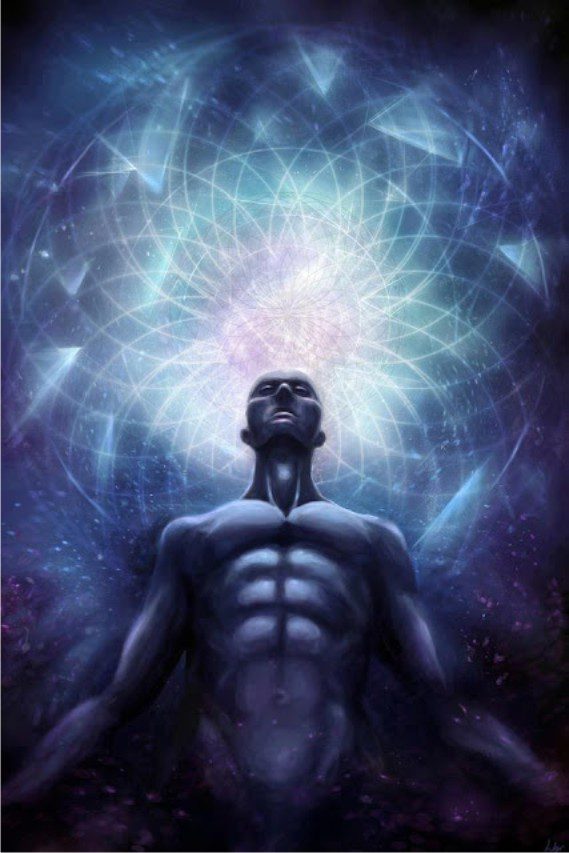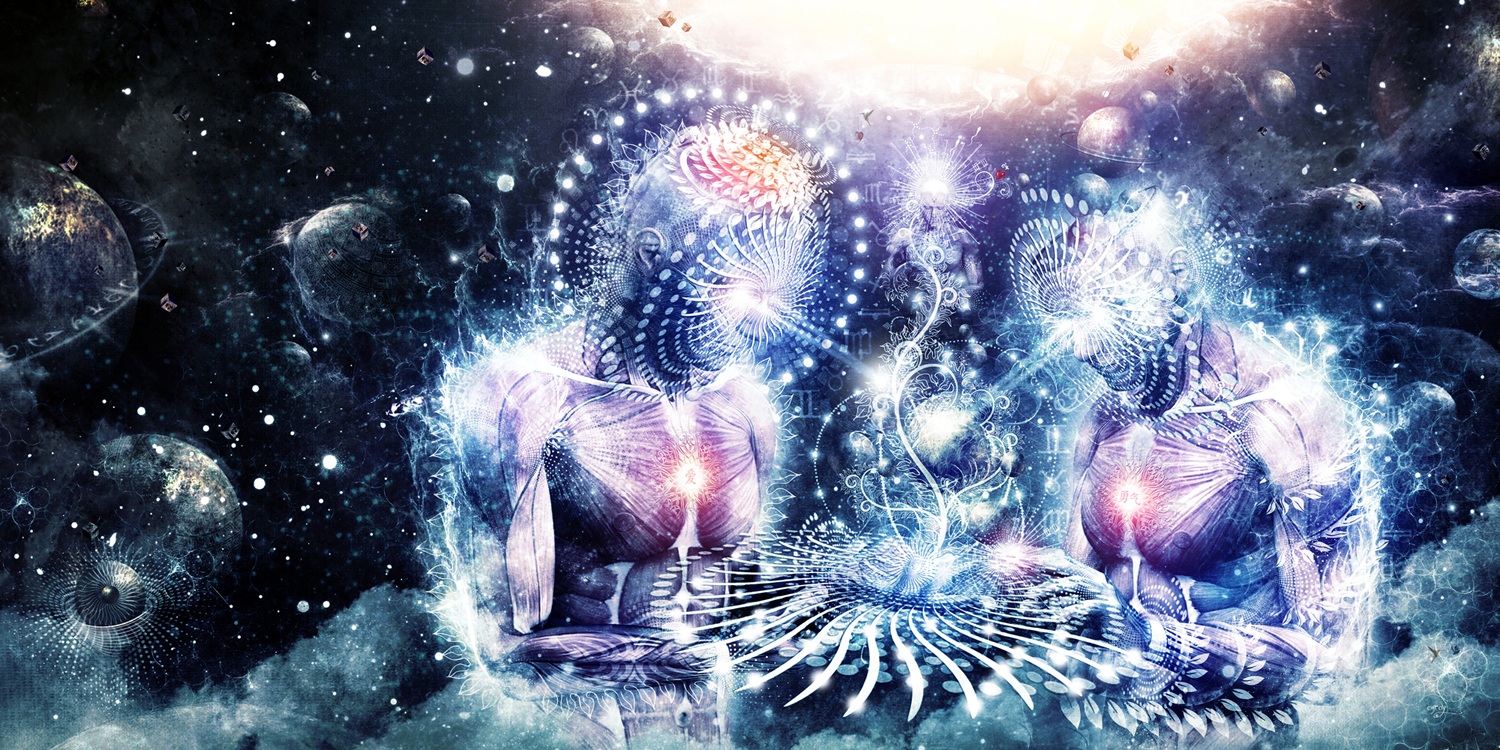Consciousness, Perception, and the Nature of Experience
When we look at the true powers of the mind and what’s actually happening in terms of our ordinary experiences, we can see the mysterious forces at work all around us and being used, often without our awareness by us. What we call perception is directed consciousness that enters into and becomes one with the object(s) being perceived, altering the state of both, and through a combined state, forms an interpretation of it as a means of creating a personal experience of it. Consciousness is the invisible force that moves into and through the light (photons) of the physical plane we call matter, and restructures it as a perception of it from the perspective of the viewer, which remakes it to be of the same (corresponding) nature of the person perceiving it. While our mind is formed into a system of interrelated and correlated patterns as a vibratory frequency or living matrix, it’s also fluid, subtle, shimmering, and undergoing a constant process of transformation by entering into the consciousness of everything around it, blending with it, harmonizing with compatible elements, reordering both the consciousness of the individual mind and the consciousness of what ever is being perceived and mentally interacted with, forming a new combination out of shared qualities, that form the bases of our perception of it as an experience of it. As we perceive we interpret, and we interpret as the basis of creating an experience of something.
Consciousness is subtle energy as vibration that vibrates at a certain rate and mode, giving it distinct attributes, qualities and characteristics, which form a kind of personality or character. The pattern of the vibration has a self-organizing mechanism inherent in it. The nature of the vibration as a living pattern enters into all material objects through shared qualities that resonate with each other, and through sympathetic induction, which is the pathway of entry into the same vibration in an external or separate entity, which is what allows us to perceive, interpret, and comprehend it. Our attention placed on something, whether actual or imagined, resonates with the similar or known qualities in the object, and as our vibration enters into and mingles with its vibration, they begin vibrating in harmony by turning on and making active the some aspects, while turning off and making recessive other aspects to form a new combination as a configuration. Whatever is activated through stimulus is brought out, illuminated and made prominent, and what’s made passive or inactive because it doesn’t resonate or isn’t apart of the consciousness of the observer, fades away and isn’t noticed or recognized as a part of the comprehension. By rendering some features active and dominant, and others inactive and passive, we reform the object or person to vibrate at the same rate we are, restructuring and experiencing them through the same qualities that make up our energetic nature or mental paradigm (mind).

The active and passive components of vibration as consciousness, work through the same principles as DNA, which through a form of on and off switch, form sequences as a series of selected attributes and qualities that change the physical, outer appearance of things and how they behave. The vibratory nature of the mind, which operates according to the same principles, forms a filtering system as a lens that we look through, where we only see in objects the same qualities and features that match and are of the same nature as we are. This filtering system that makes selections by turning some things on and others off, or readily seeing some things while failing completely to see other things, is formed by our preferences as likes and dislikes, our values, beliefs, memories, expectations, intentions, criteria for judgment, and so on. Our mind forms a larger pattern as a vibratory frequency that combines a whole series of vibrations as thoughts and ideas that are congruent and complementary to each other, forming a larger system that functions harmoniously to produce a consistent experience of reality through our perceptions. What this means is that we are only capable of seeing, evaluating, comprehending, and understanding what exists in our mental model, and can be explained, described, given meaning, or validated using our model. If something exists outside of our model, say an attribute, quality, or concept, we literally can’t see it in anything else, even though it may exist as a prominent or main feature of that object, while other people, with a different mental model can easily see it.
Through the very nature of the principles governing energy, the mind of the individual, which is the consciousness of that individual as a vibratory frequency, perceives everything external to itself, through entering into it energetically, becoming one with it in mind, and perceiving it through or as itself in another. The mind is only able to see and experience in everything else what exists in it. Our mind, as our quality and mode of consciousness, is the very basis of what we readily see and experience, and what we don’t. We can only see in others what exists in us as a quality of our consciousness, which is what allows us to see through that quality as a vibration, that activates and brings out in another the same quality, forming our impression of them as an evaluation or calculation, that creates an image of them made out of our own image, by reforming (informing) them with the same qualities. Our attention placed on something, changes or rearranges its molecular structure and how it appears, behaves, or conforms to our perception of it. The viewer and the object being viewed are not separate, but combined to form a unified event.
Consciousness exists all around us as the very basis for what we perceive as reality. Consciousness exists in every object and live form in varying degrees and modes of operation. Consciousness as a psychic, mind-like quality, exists in the subatomic realm of atoms, molecules, and particles as the active (living) force in it, as well as what structures it and holds it together as a unified form of some sort. Our perception of reality is formed out of the interconnection of consciousness with the same level, degree, and mode as it exists in everything else. Our consciousness enters into the consciousness of everything around us through sympathy, reorganizing it by activating the aspects that correspond to us, which shapes our perception of the world around us, providing us with a consistent experience. The consciousness in our environment is always interacting with our consciousness and responding to our feelings, thoughts, emotions, intentions, expectations, and so on, which we’re always projecting. Our level and quality of consciousness connects us to that same level of reality in everything else, and determines what shows up, is illuminated and stands out, and what aspects we naturally enter into relationship with and form our everyday interactions with as selected elements or small parts of a greater whole.
Consciousness on all levels exists in a primal relationship with itself in everything else. Consciousness is vibration as patterns that structure reality by re-configuring it to match the consciousness of the individual. As vibration, reality as our personal experience of what exists as a universal and objective reality, is created through resonance that is drawn into and affects everything of the same vibration by vibrating (moving) it. We enter into relationship with everything based on shared qualities, and reorder it to be the same vibration as we are and a natural part of our overall reality as a thematic pattern that tells a certain type of story by creating a consistent experience of things.
The meaning we give things by how we interpret them to fit into our story about them forms our perception of them as what we naturally choose and are programmed to see. What we choose to see is a natural expression of our paradigm that’s necessary to continue telling our story about things as a way of making sense out of them. Because of this natural act of perception, we hardly ever see people as they truly are, but rather as we are. We are always seeing ourselves in everything else. All perception in the ultimate sense is self perception. The outer world is a mirror reflecting back to us our own inner world. Our inner self or mind, forms the basis for the outer world as our perception and subjective experience of it. Our reality, in its most fundamental sense, is our personal creation, not as a deliberate or intentional act, but as the natural and automatic operation of our own mind as our vibratory frequency.
This phenomena, the product of the spiritual component of reality as the energetic matrix of vibratory frequencies all interacting with the same frequencies in everything else, that makes up the invisible substrata orchestrating and animating the material world, keeps matter in a lustrous, shimmering form of constantly changing it’s outer appearance while the internal material it’s made of remains stable and consistent. Only what’s turned on and off changes from individual to individual, mind to mind, and interaction to interaction. This is the law of the triad, as three-in-one, the Vesica Piscis as the two minds blending and interacting to form a new combination that births a new reality as a new variation of shared qualities. We are constantly transforming matter just by interacting with it mentally, each mind, each relationship forming a new variation as a remix of the same basic components.
Each person who looks at the same thing will see something intrinsically different. Each person that’s a part of the same event will experience that event in an entirely different and unique way. Each relationship we form is based on resonance and shared qualities that bring out new parts in each person, just through the nature of their interaction. In order to perceive anything, we blend with it consciously, turn it on (excite it), form a unified state (coherence) with it, bring out in it the same consciousness we ourselves possess, and experience it as an extension of ourselves. Everywhere we look is a mirror reflecting back to us aspects of ourselves, only some of which we’re actually aware of. We can see into the hidden depths of our own mind, by simply studying our own perception of other people, what we see in them, how we judge them, and the story we tell ourselves about them that creates how we experience them. We are the creator of all our experiences. Once we realize this . . . it gives us great insight into our own mind and the workings of consciousness itself in its relation to all reality.
Transpersonal Psychologist, Personal Transformation Coach, and Spiritual Teacher



